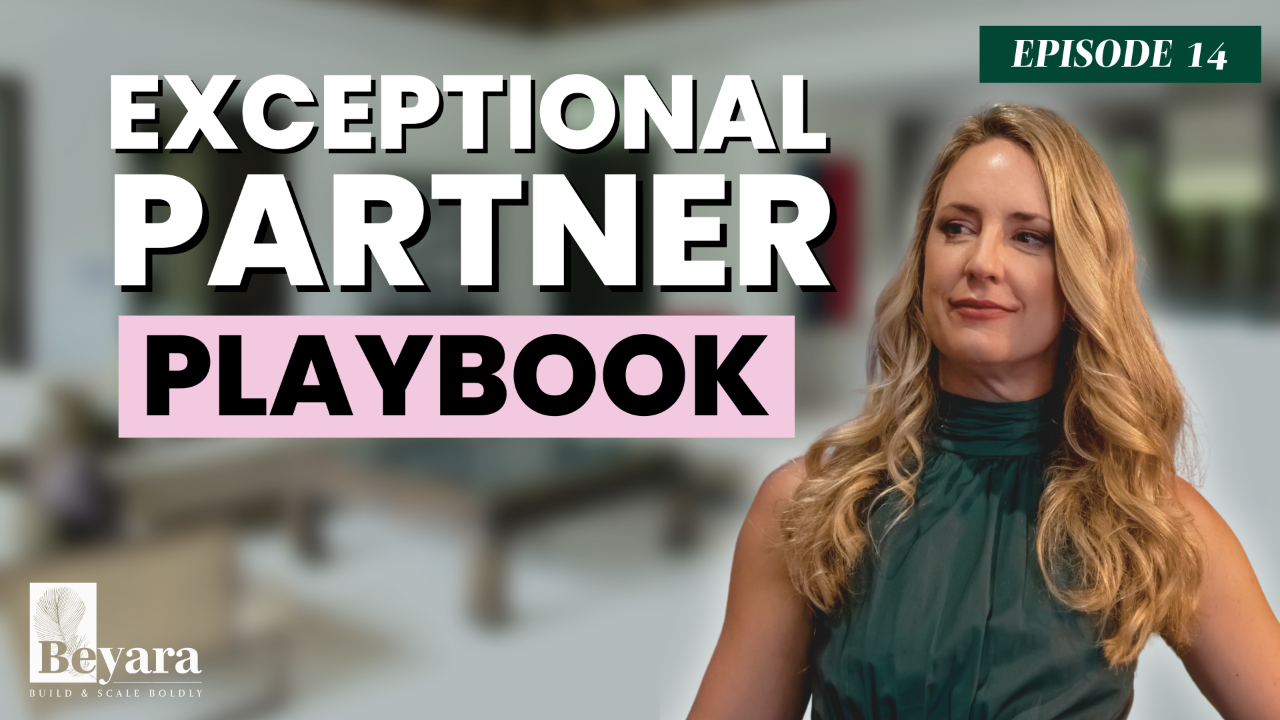How to Be an Exceptional Partner: A No-Drama Framework for Partnerships that Last

Partnerships can be one of the greatest accelerators in your business and life—and also one of the greatest sources of stress. The difference usually isn’t strategy, opportunity, or timing. It’s how you show up inside the partnership.
Most of us want great partners, but fewer of us stop to ask:
Am I being an exceptional partner myself?
This is where partnerships shift. Not when the other person finally does what you think they should, but when you take full ownership of who you’re committed to being, regardless of how anyone else is showing up.
Here’s a simple, no-drama framework to help you strengthen the partnerships you’re in—and choose better ones moving forward.
Choose Your Identity First
Before you think about roles, contracts, or outcomes, pause and decide who you want to be in the partnership. Not the reactive version of you. The intentional one.
Instead of waiting for the “perfect partner,” start by embodying the qualities you want to experience: honesty, calmness, responsibility, direct communication, or whatever aligns with your values. Those qualities become your anchor when challenges arise.
A helpful way to ground this is finishing the sentence:
“In this partnership, I commit to being someone who…”
and letting that guide you, especially in tense moments.
Clarify Your Why
Partnerships feel easy at the beginning. But when things get hard—or simply more real—your “why” becomes the foundation that keeps you aligned.
Ask yourself what purpose this partnership serves in your bigger vision. Why does it matter? What could it make possible that you couldn’t do alone? Clarity here gives you a touchpoint when frustration or fatigue kicks in.
When you anchor into why you chose this partnership, you respond more from intention and less from emotion.
Trade Scorekeeping for Leadership
Quiet scorekeeping is one of the biggest partnership killers.
“I’m doing more.”
“They’re slacking.”
“I care more than they do.”
It’s human—but it’s also a fast track to resentment.
Stepping into exceptional partnership requires shifting from scorekeeping to responsibility. You look at what you can own, what you can communicate more clearly, and how you can show up in alignment with the partnership you want to build.
This doesn’t mean you excuse harmful behavior. It means you lead from your values, not from reactivity.
Create the Structure That Protects the Relationship
Strong partnerships aren’t held together by vibes—they’re held together by clarity.
That means having the grown-up conversations early: how decisions get made, what each person is responsible for, what happens when life inevitably throws curveballs, and how someone exits gracefully if needed.
This structure doesn’t limit the relationship—it protects it. It removes guesswork and creates a sense of psychological safety that allows both people to do their best work.
Build Strength Before You Blend It
Healthy partnerships are made between people who are already grounded, capable, and accountable on their own. You can complement each other beautifully, but you shouldn’t depend on a partner to fill gaps you’re avoiding in yourself.
When each person brings self-leadership, emotional maturity, and personal responsibility to the table, the partnership becomes additive rather than draining.
This is the type of partnership that lasts—and the type that scales.
If you’re noticing old patterns you’ve carried into past partnerships, or places where you want to show up differently now, that’s a powerful insight. Self-awareness is the beginning of better leadership, better communication, and much better partnerships.
And if you want support strengthening the mindset and leadership skills that make partnerships work—everything from communication to ownership to emotional intelligence—you can explore the books that shaped how we lead and collaborate at Beyara.
👉 Download Leti’s Favorite Books List
These are the exact titles that support clearer communication, stronger self-leadership, and healthier relationships in business and beyond.
As you reflect, consider this:
Where in your current or future partnerships are you waiting for someone else to go first—and what would shift if you showed up as the partner you want to have?
What’s one small step you can take this week to embody that decision?





